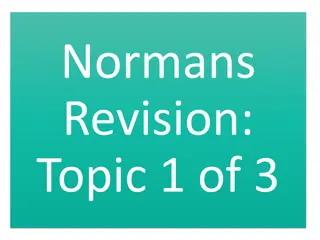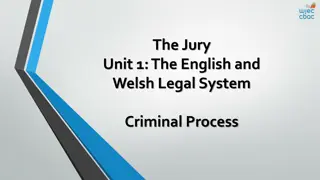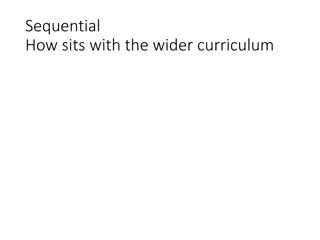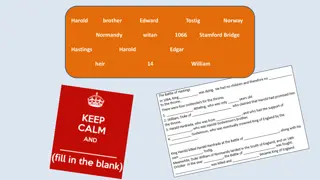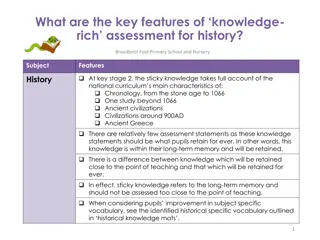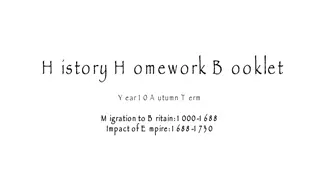
Effective Strategies for Teaching Language Learners
Learn about the key steps and techniques involved in teaching language learners effectively, including the importance of greeting students, setting objectives, conducting activities, providing feedback, and empowering students in their language learning journey. Understand the stages language learners pass through, from dependence to independence and proficiency, as outlined by Curran.
Download Presentation

Please find below an Image/Link to download the presentation.
The content on the website is provided AS IS for your information and personal use only. It may not be sold, licensed, or shared on other websites without obtaining consent from the author. If you encounter any issues during the download, it is possible that the publisher has removed the file from their server.
You are allowed to download the files provided on this website for personal or commercial use, subject to the condition that they are used lawfully. All files are the property of their respective owners.
The content on the website is provided AS IS for your information and personal use only. It may not be sold, licensed, or shared on other websites without obtaining consent from the author.
E N D
Presentation Transcript
Give the reason for the following : 1. The teacher should start with greeting the students, introduce himself and has students introduce themselves. 2. The teacher should tell the students what they are going to do. 3. The first activity done is by making students have conversation 4. When students perform, the teacher should stand behind them
5. The teacher translates what the students want to say 6. First Feedback : The students are invited to talk about how they felt during conversation 7. The teacher listens to his/her students but not giving advice 8. Students should not be made two tasks at the same time 9. Human Computer : The students should choose which part of the dialogue or word they want to practise
10. The teacher repeats after the students 11. The students should work in groups 12. Second Feedback : The students are asked to talk about the experience they have had 13. The syllabus is made by the students themselves
Curran believes that target language learners pass through five stages as they go from being a beginning language learner to an advanced language learner : Stage 1 : Like an infant, completely dependent, repeats utterances, overhears others interactions
Stage 2 : try to be independent when producing simple expressions Stage 3 : begin to understand directly in the target language Stage 4 : function independently, but ask for correction Stage 5 : improve their understanding of the target language conversation as well as grammar, producing language confidently
1. Teachers Objective : It is to teach the target language ( secure ) environment the following : A. Using language for communication B. Be responsible of their own learning C. Learn from one another ( to behave as one community ) learners in a nondefensive
2. Teachers / students Roles : The teacher plays two significant roles : counselor and teacher The students roles change from being totally dependent on the teacher in the first three stages to being independent in the fourth and fifth stages. As for accuracy and fluency, the teacher should focus on fluency in the first three stages and on accuracy in the last two.
3. Characteristics of the teaching / learning process : 1. Students have conversation 2. Translation 3. Recording the conversation 4. A transcript is made of the conversation 5. The transcript becomes a text through which the teacher can teach grammar, vocabulary, meaning, and creating new sentences.
Curran believes that nondefensive ( secure ) learning comprises 6 elements abbreviated as SAARRD S = Security A= Aggression ( means that students should be given the chance to assert themselves and be actively involved in their learning. This is clearly manifested in the conversation the students make ) A= Attention ( learners, especially the beginners, should not be made do two tasks at the same time )
R = Reflection ( It occurs in two situations; first when they are asked only to listen when the teacher reads times, and second when they are asked to express how they felt about the learning experience they have had ) R = Retention ( It is the integration of the material sentences ) D = Discrimination ( When students were asked to listen to Human Computer to check their production. So they are learning to match their Computer ). the conversation for three they studied in creating new production to that of the Human
4. Interaction ( This method is described as teacher students centred as both of them are decision makers ) 5. Students Feelings ( It is the cornerstone in this method which should be taken care of in a number of steps made by the teacher ) 6. Language / Culture : ( Language is communication, and culture is an integral part of it )
7. Language Components / Skills : ( grammar / vocabulary / pronunciation ) are taught Skills ( understanding and speaking are emphasized at the beginning with reinforcement through reading and writing ) Students generate their own syllabus at the beginning . Later on, when students feel more secure, the teacher might prepare specific materials or work with published textbooks
8. Native Language Role : 9. Evaluation : Integrative tests are preferred to the discrete point ones, like in writing a paragraph or making an interview ) Self evaluation is encouraged 10. Error Correction :
Recording students conversation Transcription Reflective listening Human Computer Small group tasks
1. learning takes place in a communicative situation where teachers and learners are involved in an interaction. 2. It encourages learners to cooperate and learn from each other, feel they are like one unit ( community ). 3. The teacher allows the learners to determine the type of conversation and to analyze the foreign language inductively.
4. It helps learners to act independently in learning 5. The teacher works hard to lower the learners anxiety and create a safe atmosphere for efficient learning
1. Inductive learning may not be suitable for early stage learners. 2. The non-directive role of the teacher at early stages of learning cannot be useful for learners 3. No syllabus. It is difficult to design a new dialogue each time with different language structures and vocabulary to teach 4. It is not suitable for large classes 5. It is time consuming



